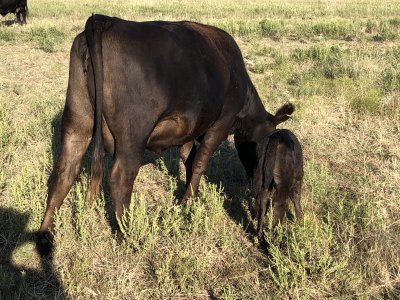Jeanne - Simme Valley
Well-known member

Randi DeBruyne
posted this on FB Commercial Beef Cattle:Who knows what their cost to keep a cow for a year is? For the summer or the winter? What about cost to raise a replacement heifer? Any ideas on when or if she is actually making a profit?
How many years does it take in your herd for a cow to start turning a profit? What is the max you can afford to pay to buy a replacement heifer? A bred heifer? A cow?
There is a lot that goes into cost of production and the value of an animal. Some of it is pretty easy to figure out, some of it is a lot more difficult. Some things on the farm, shouldn't really be attributed to a cow, even if they are paying for it. For example, my horses and the feed they eat. Sure I do use the horses to work the cows, but a good part of what the horses do isn't exactly related to the cow herd. But the cows do pay that bill in the end.
Feed and pasture costs are probably the easiest to figure out. There are bills for feed and mortgages, rent or lease fees for the pasture. Vet, mineral, and salt are pretty easy too. Harder to figure out are things like machinery, buildings, fences, and corrals, YARDAGE! Some of it wouldn't be too hard to figure out if you just keep track of it, but that is easier said than done…. who wants to sit in the house and figure all that paperwork out after all.
Today I sat down and did some figuring. Came out with a pretty decent calculator too, if I do say so myself. This one will calculate your animal expenses from weaning through to production. Your yearly maintenance and feed costs. The bull costs. It'll show you how long it will take for your cows to start making a profit, and how much they made all together. And it will calculate your profit or loss depending on what time of the year and age of cow. Now, I am sure I am missing some numbers, but I am also pretty sure that I covered all the big expenses.
Some numbers I came up with in my herd
Cost to take a heifer from weaned to Bred, between $2000 and $2100
Cost to take her to weaning her first calf, between $2800 and $3000
Yearly maintenance cost, including Vet work, breeding, feed, pasture and more, about $850
# of calves before she returns any profit is 5
You should be able to download or save a copy from this
https://docs.google.com/.../1BI52q4Vh6plP7hPHj51R.../edit...

